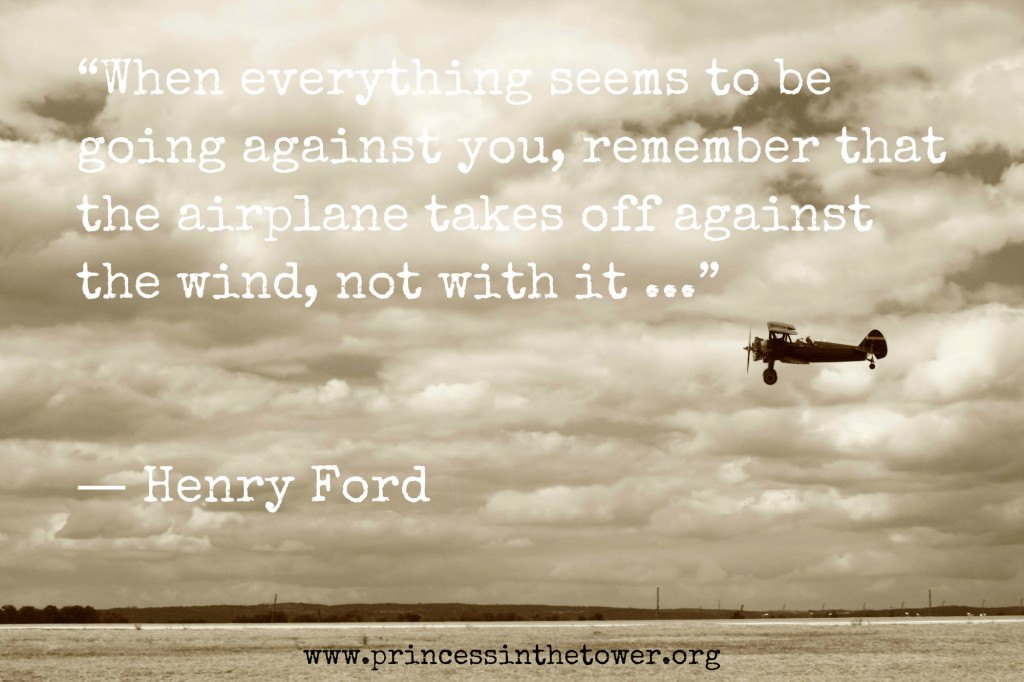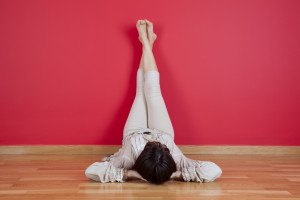When you live with a chronic pain condition that makes even British weather look predictable, stress is a natural consequence. It’s hard never knowing how we’ll feel, and it’s exhausting living in constant pain. Aside from the challenging symptoms, we must deal with the grief of our life un-lived and the life we lost; the disbelief of others; and of course the limitations on our mobility, life, and dreams.
It’s little wonder that we long to escape, to calm our exhausted body and soothe our spirits, which leads me onto the purpose of this post. In the survey that so many of you did (you can find it here should you wish to guide these posts too), almost everyone asked for ways to cope when this overwhelm truly does overwhelm us.
Although chronic pain and illness is of course stressful, additional stress can make our pain and other symptoms far worse, causing a ‘wind up’ of the pain and opening of the pain gates. Stressful thoughts magnify this effect and create tension, which of course increases pain. So here are some tools that help me — in the hope that they help you too — some simple for if you’ve only a window of time, others for the end of your day.
Massage Your Ears
A technique that stems from Traditional Chinese Medicine is massaging your ears. Rubbing your ears, and gently massaging them has a profoundly soothing effect on your entire system, and is especially calming and soothing when there is an over activation of the sympathetic wing of your nervous system, as with CRPS and fibromyalgia.
The 210 acupressure points on the ears can be stimulated with a simple one or two minute massage on each ear, which is very soothing and calming to the spirit. Rub your index finger gently up and down behind each ear, where it meets your skull for a few minutes; then massage, gently pull and finally, cover your eyes with your palms and breath deeply. It’s a beautifully calming tool to know.
Put Your Legs Up a Wall
Putting your legs up the wall — though seemingly simple — has many benefits from easing pain and tension to helping the respiratory and circulatory systems, even — by certain ancient sources, slow down ageing, for now though it’s ideal to help you relax.
Part of restorative yoga, this pose (Viparita Karani) is a gentle inversion. It can also be used to relieve headaches, reduce anxiety, ease tired and painful feet and legs, as well as lessen back pain.
Breath deeply, exhaling tension then allow your breath to find it own natural depth and rhythm. This short video: Legs Up the Wall Pose | Restorative Yoga | Yoga Therapy with Rodney Yee, shows three different ways to do it, each increasing in intensity. Obviously, do not do anything that contraindicated for you personally.
Aromatherapy Blends to Soothe Your Spirit
The power of our olfactory system is incredibly powerful in affecting both mood and your ability to cope with such challenges. Essential oils can be used for both comfort and healing, and are a lovely addition to your tool-kit of managing, coping, and living well with chronic illness and pain. Here are some beautiful blends to soothe your spirit:
Aromatherapy blends for if you’re…
Tense – add 3 drops of clary sage, 2 of cypress and 1 of lavender
Exhausted – add 2 drops of geranium, 2 of sandalwood and 1 of jasmine
Restless – add 3 drops of frankincense and 2 of geranium
Depressed – add 3 drops of jasmine and 1 of ylang ylang
Listen to your favourite music
Music is underused as a natural anti-depressant but has profound effects on our moods and also ability to cope with depression and chronic pain. If it’s been an especially long and painful day for you, playing some of your favourite music can really help but the benefits extend far further than for your mood.
This study found that music actually reduces pain and increases functional mobility for patients with fibromyalgia. Of course, it’s subtle but when facing such incessant symptoms and difficulties, everything that helps even humbly, should be embraced.
The beneficial effects were actually seen after listening, not only during, showing that it wasn’t merely that music was a distraction from the pain. While other studies on music therapy have found that it reduces anxiety, and helps patients cope with other chronic illnesses. Whatever kind of music makes you happy, put it on, and give your mood a lift.
Try this Calming Acupressure Sequence
Another gentle technique for soothing your spirit that came from the East is this sequence of calming acupressure points. If you are feeling stressed-out, confused or overwhelmed this sequence swiftly delivers you to a place of stillness, refreshing your spirit and quieting your thoughts when the pain is overwhelming.
- Become aware of your breath, inhaling and exhaling slowly, gently, and evenly.
- Place the right hand on the Hundred Meeting Point GV 20, which is on the top of your head (see image)
- Now place your left hand at the Third Eye Point or GV 24.5, holding GV 20 with GV 24.5 together.
- Close your eyes in stillness and breathe deeply for one to two minutes.
- Keeping your right hand on GV 20 move your left hand to the Sea of Tranquillity CV 17, which is located at the centre of the breastbone (see image).
- Continue to breathe deeply as if you are breathing directly into the Sea of Tranquillity point, as if it is an aperture through which you breathe. This has an instantly calming effect.
- Stay in this serene stillness for one to two minutes.
Press this Acupressure Point
Another magical acupressure point is found in the centre of your neck just beneath your skull, in that hollow (known as the ‘Jade Pillow’), and one incredibly soothing technique is to pinch either side of this point with your index finger and thumb. Work your way up and down this little area, pinching and holding then repeating for a couple of minutes — though you may feel the benefits almost instantly.
Escape to Paradise
After a long and painful day, it’s natural to long to escape — to make the pain stop — find a moment of respite, as we to try and remember what comfortable ever felt like. Though it won’t take away your pain, visualisation can and does lessen it, while also giving you the extra pleasure of a mental retreat from the ceaseless demands of life with severe chronic pain and illness.
Learning how to meditate may not be easy but visualisation can be learnt in a single afternoon, leaving you with a powerful pain management tool for life. Visualisation is simple, effective and powerful tool to help cope with pain, calm your spirit and escape inwardly, without even leaving your bed (so is ideal even during a flare-up).
Even without the challenges of complicated pain conditions most people find that learning to meditate isn’t easy. Others find meditation boring but still would appreciate its healing benefits — especially for coping and managing chronic pain.
This is when this blissful alternative — which also gives you a luxurious escape, and grows in its practice — comes in. Even if you find visualisation tricky to start, there are ways to facilitate are far finer and more intuitive experience
Try this simple visualisation:
- Lie down and get as comfortable as you can. When you feel relaxed, count yourself down from ten to one, breathing slowly and deeply.
- It can help to say a relaxing statement as you count, for example:
“10 — I choose to relax, 9 — I feel myself relaxing deeper and deeper, 8 — I let go of tension, 7 — I am feeling calmer with each breath, 6 — deeper and deeper, 5 — my eyes are growing heavy, 4 — I am calm and relaxed, 3 — every part of me now lets go of tension, 2 — I am calm, relaxed and at ease, 1 — I am now in a state of deep relaxation.”
- Now see in your mind’s eye that you are on a beautiful beach (should you prefer it, choose wherever is peaceful and healing for you personally). It can either be somewhere you have visited that is special to you, or just imaginary.
- Let all your senses become alive; smell the sea air, listen to the rustling of the coconut palms gently swaying in the breeze behind you and the sound of waves riding up the shore, look at the deep turquoise water shimmering in the sunlight, feel the heat of the sun on your skin, and let the warm sand squish between your toes.
- There’s nothing to do… no stress… just endless blue skies teaming with bird-life and the scent of summer.
- Wander down to the water and walk along the shoreline, letting the waves lap at your feet. Even if limited in life by disability, here you are free. Run, swim, fly should the mood take you. It’s liberating and healing.
- Let your tension and pain flow out of you down into your feet and let the sea take it away.
- Think to yourself: I am now relaxed and at peace.
- When you are ready, sit down on the beach and slowly count yourself back up, repeating the affirmation in between the numbers from one to ten.
Visualisation can have a profound and positive effect on wellbeing and coping with pain. Visit a tropical beach, a forest at sunrise, run and leap off a cliff top and dive into the sea, swim with dolphins should the mood take you. You are only as limited as your imagination.
Ease Pain in the Bathtub
Fused with the essential oil blends above, indulge your senses with a luxurious bath: fill the room with tea-lights (or their LED equivalent), listen to some calming music or soothing nature sounds, and add one of the above aromatherapy blends.
You may also like to add Epsom, Himalyan or Dead Sea salts for their high mineral content, especially magnesium, which can also help your muscles relax and lessen your pain. After your bath massage your skin with a rich lotion then wrap up in your dressing gown and relax.
Warning: If you use fentanyl or morphine patches for your chronic pain, do not put any oil into the bath as it can interfere with the efficiency of your patches. Use an aromatherapy oil burner or diffuser instead.
Reading, Audiobooks & Apps
As addicted to reading as I am, I cannot imagine life without reading yet sometimes the book is too painful to hold, my much-adored Kindle Paperwhite also too heavy for my CRPS-filled hands. It’s in these times — whether using headphones or blaring my books out loud — audiobooks come into their own.
Check out Audible for books that can sync with a Kindle, or try the many free audiobooks on open culture. There are more free public domain audiobooks at LibriVox. You may also enjoy the brilliant short fiction at The New Yorker.
If you love reading articles but encounter the same painful problems, there are apps such as the inspired Umano, which allows you to listen to articles and news online without even moving your painful body. They’re read by real people too. I love this for when longing to read but being in too much pain to do so.
Calming an Overactive Nervous System
Relaxation techniques are useful for everyone but especially those who live with chronic illness and pain, helping you relax while calming your sympathetic nervous system and activating your parasympathetic nervous system to reduce pain levels. “Your body has numerous major systems; the optimal point of entry into all of these systems is the autonomic nervous system (ANS),” says neuroscientist and author, Rick Hanson.
“This autonomic nervous system (ANS)—which is part of the larger nervous system—is intertwined with and helps regulate every other system.” The sympathetic nervous system is in charge of the fight-or-flight response, whereas the parasympathetic wing of the nervous system (PNS) helps you relax and calm down.
“When you stimulate the parasympathetic wing of the ANS, calming, soothing, healing ripples spread through your body, brain and mind,” says Rick Hanson. Central sensitisation, which occurs in many neuropathic chronic pain conditions, causes the spinal cord and brain to be constantly flooded with pain signals, so it becomes overloaded. Pain signals are firing into the spinal cord and brain constantly, as a result the nervous system becomes hyper-sensitised to pain.
Other ways to activate the parasympathetic wing of your nervous system, include progressive relaxation, a simple big exhalation, touching your lips (particularly playing with your upper lip), mindfulness, balancing your heart rate, and even yawning, though researchers are unsure how yawning achieves this. Meditation not only activates the PNS but also trains your brain to lessen its hyperactive state and in turn, your pain levels (I’ll go deeper in a post of its own).
The more you engage in these techniques, the calmer you will be as a whole, and the calmer you are, the lower your pain. Even when your pain flares up, you’ll have these tools to utilise to instigate moments of calm in the storm. You may also like to try the Body Scan technique here, or these Natural Ways to Reduce Pain.
Feel free to share your thoughts in the comments below or in the Guest Book. ♥
Sign-up to the Princess Post and receive a free Flare-Up Toolkit here:
[avatar user=”jomalby” size=”thumbnail” link=”www.princessinthetower.org” target=”_blank”] Gentle hugs x[/avatar]










Just diagnosed with CRPS Im requesting a “free flare up tool kit for managing CRPS pain” JL
So saddened to hear that Joan and hope it was an early diagnosis. I’ll add you this instant. If you’ve not seen, read this post on CRPS and this which goes far deeper into managing it. Gentle hugs ?